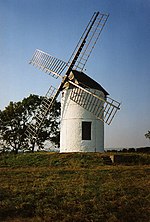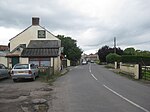Wedmore First School Academy
1876 establishments in EnglandAcademies in SomersetEducational institutions established in 1876Primary schools in SomersetUse British English from February 2023

Wedmore First School Academy is a first school academy in Wedmore, Somerset, for students aged 4–9, with a nursery for children from age 2. It has a total capacity of 210 pupils and a current enrollment of 201.The school was founded in 1876, moved to its present site in 1990, upgraded to academy status in 2011 and became part of the Wessex Learning Trust in 2016.
Excerpt from the Wikipedia article Wedmore First School Academy (License: CC BY-SA 3.0, Authors, Images).Wedmore First School Academy
Pilcorn Street,
Geographical coordinates (GPS) Address Phone number Website Nearby Places Show on map
Geographical coordinates (GPS)
| Latitude | Longitude |
|---|---|
| N 51.2241 ° | E -2.8208 ° |
Address
Wedmore First School Academy
Pilcorn Street
BS28 4BS
England, United Kingdom
Open on Google Maps










